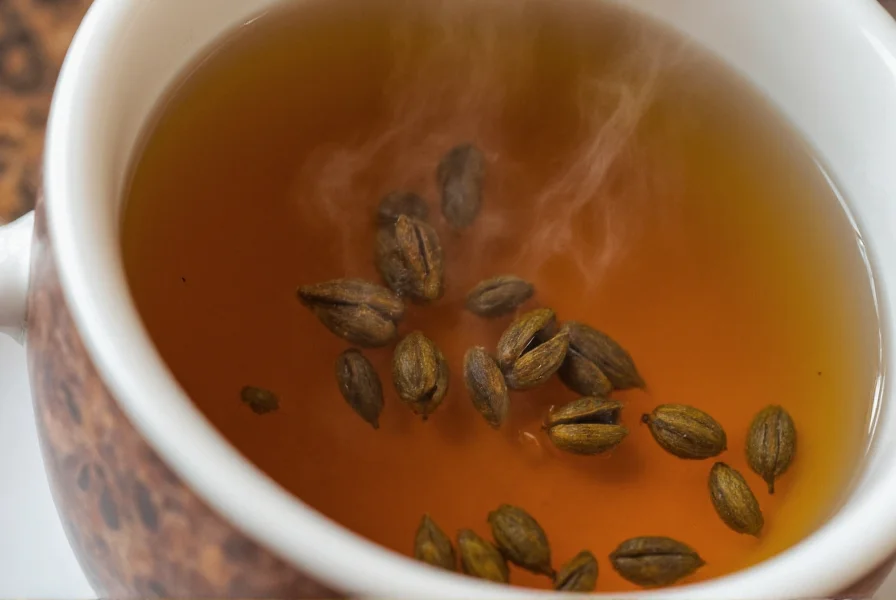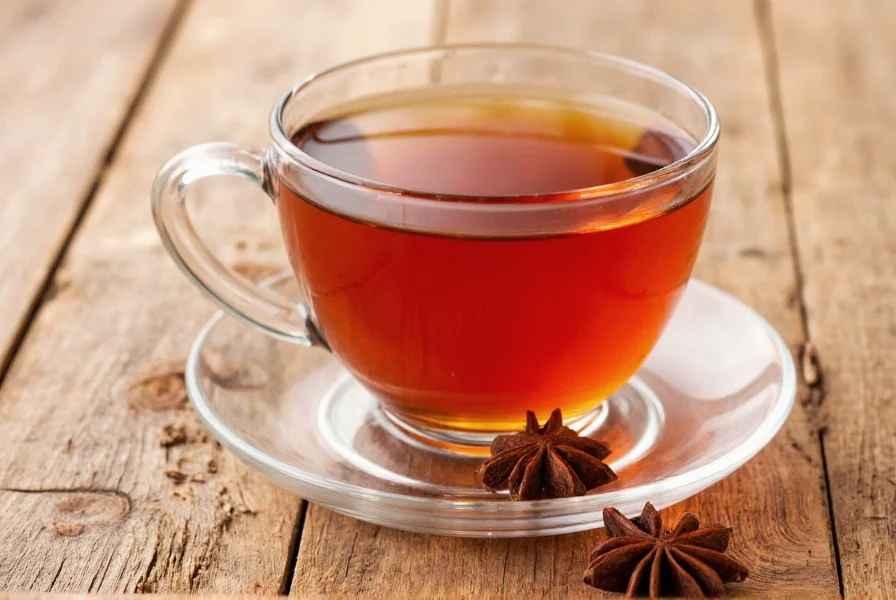Anise tea offers a naturally sweet, licorice-flavored beverage that has delighted palates and supported wellness traditions for thousands of years. This caffeine-free herbal infusion comes specifically from the seeds of Pimpinella anisum, a flowering plant in the Apiaceae family native to the eastern Mediterranean and Southwest Asia. When properly prepared, anise tea delivers a warm, aromatic experience with subtle notes of sweetness and spice that make it a popular after-dinner drink in many cultures.
Understanding Anise: Botanical Background
Many people confuse anise with star anise or fennel, but these are distinct plants with different botanical origins. True anise (Pimpinella anisum) produces small, grayish-brown seeds about 3-4mm long that contain anethole, the compound responsible for its characteristic flavor. Star anise comes from a completely different plant (Illicium verum) native to China, while fennel (Foeniculum vulgare) produces similar but milder-tasting seeds. When searching for how to make tea with anise, ensure you're using genuine anise seeds rather than substitutes for the authentic experience.
| Herb | Botanical Name | Flavor Intensity | Primary Region |
|---|---|---|---|
| Anise | Pimpinella anisum | Strong licorice | Mediterranean |
| Star Anise | Illicium verum | Sharper, more intense | East Asia |
| Fennel | Foeniculum vulgare | Milder, sweeter | Mediterranean |
Historical and Cultural Significance
Civilizations from ancient Egypt to Rome have valued anise for both culinary and medicinal purposes. Egyptian pharaohs included anise seeds in burial preparations, while Roman naturalist Pliny the Elder documented its use for improving breath and aiding digestion. In traditional Spanish and Greek cultures, anise tea remains a common after-meal beverage believed to support healthy digestion. Understanding the cultural context helps appreciate why anise tea preparation methods vary significantly across regions, with some preferring longer steeping times for stronger flavor.
Health Benefits of Anise Tea
Modern research supports several traditional uses of anise tea, particularly for digestive health. Studies indicate that anethole, the primary compound in anise, demonstrates antispasmodic properties that may help relieve gastrointestinal discomfort. When exploring health benefits of anise tea, consider these evidence-supported applications:
- Digestive support - May help reduce bloating, gas, and indigestion
- Respiratory relief - Traditionally used to soothe coughs and clear congestion
- Menstrual comfort - Some studies suggest it may reduce menstrual pain
- Antimicrobial properties - Shows activity against certain bacteria and fungi
However, most research involves concentrated extracts rather than tea preparations, so is anise tea good for digestion in typical consumption amounts remains an area needing more study. Always consult a healthcare provider before using anise tea for medicinal purposes.

Preparing Authentic Anise Tea
Creating the perfect cup of anise tea requires attention to detail. For optimal flavor extraction and potential benefits, follow these preparation guidelines:
- Use 1-2 teaspoons of crushed anise seeds per 8 ounces of water
- Bring water to just below boiling (195-200°F or 90-93°C)
- Pour hot water over seeds in a teapot or infuser
- Cover and steep for 7-10 minutes (longer for stronger flavor)
- Strain to remove seeds before serving
Many people wonder what does anise tea taste like compared to other herbal teas. Properly prepared anise tea offers a warm, sweet licorice flavor with subtle spicy notes and a smooth finish. Adding a slice of lemon or a small amount of honey can balance the intensity for those new to the flavor. For a traditional Mediterranean experience, serve after meals to support digestion.
Safety Considerations and Potential Side Effects
While generally recognized as safe for most adults, anise tea may cause concerns for certain individuals. Understanding anise tea side effects is crucial for safe consumption:
- People with estrogen-sensitive conditions should consult doctors, as anise contains compounds with mild estrogenic activity
- Those with ragweed or carrot allergies may experience cross-reactivity
- Pregnant women should limit consumption as high amounts may stimulate uterine contractions
- May interact with certain medications including blood thinners and estrogen therapies
As with any herbal preparation, moderation is key. Most safety concerns relate to excessive consumption rather than typical tea preparation amounts.
Anise Tea in Culinary Applications
Beyond drinking, anise tea serves as a flavorful base for various culinary creations. Chefs often use cooled anise tea to:
- Infuse poaching liquids for fruits like pears and apples
- Create aromatic syrups for desserts and cocktails
- Enhance the flavor of baked goods like biscotti and breads
- Add complexity to savory braises and stews
When comparing anise tea vs star anise tea, note that star anise provides a more intense flavor better suited for cooking, while true anise tea offers a more delicate profile ideal for drinking.
Conclusion
Anise tea represents a time-honored herbal infusion that bridges culinary delight with potential wellness benefits. Its distinctive licorice flavor, digestive properties, and cultural significance make it a valuable addition to any tea collection. By understanding proper preparation methods and potential benefits, you can fully appreciate this ancient herbal remedy in your daily routine. Whether enjoyed after meals for digestive support or as a comforting evening beverage, tea with anise offers a unique sensory experience rooted in centuries of tradition.
Frequently Asked Questions
What's the difference between anise tea and star anise tea?
Anise tea comes from Pimpinella anisum seeds, while star anise tea comes from the star-shaped fruit of Illicium verum. True anise has a sweeter, milder licorice flavor compared to star anise's sharper, more intense taste. They're from different plant families and shouldn't be used interchangeably in recipes requiring specific flavors.
How often can I safely drink anise tea?
Most adults can safely enjoy 1-3 cups of anise tea daily. However, those with hormone-sensitive conditions, pregnant women, or people taking certain medications should consult healthcare providers before regular consumption. Moderation is key, as excessive amounts may cause side effects.
Does anise tea contain caffeine?
No, authentic anise tea is completely caffeine-free as it's an herbal infusion made from plant seeds rather than from the Camellia sinensis plant. This makes it an excellent evening beverage option for those sensitive to caffeine or looking for a relaxing bedtime drink.
Can children drink anise tea?
Children over 2 years can occasionally have small amounts of anise tea, but regular consumption isn't recommended. Some traditional cultures use diluted anise tea to soothe infant colic, but medical professionals generally advise against giving herbal teas to infants due to potential risks and lack of regulation.
How should I store anise seeds for tea?
Store anise seeds in an airtight container away from light and heat. Properly stored in a cool, dark cupboard, they'll maintain optimal flavor for 1-2 years. For extended freshness, keep them in the refrigerator or freezer. Crush seeds just before brewing for the most aromatic tea.











 浙公网安备
33010002000092号
浙公网安备
33010002000092号 浙B2-20120091-4
浙B2-20120091-4